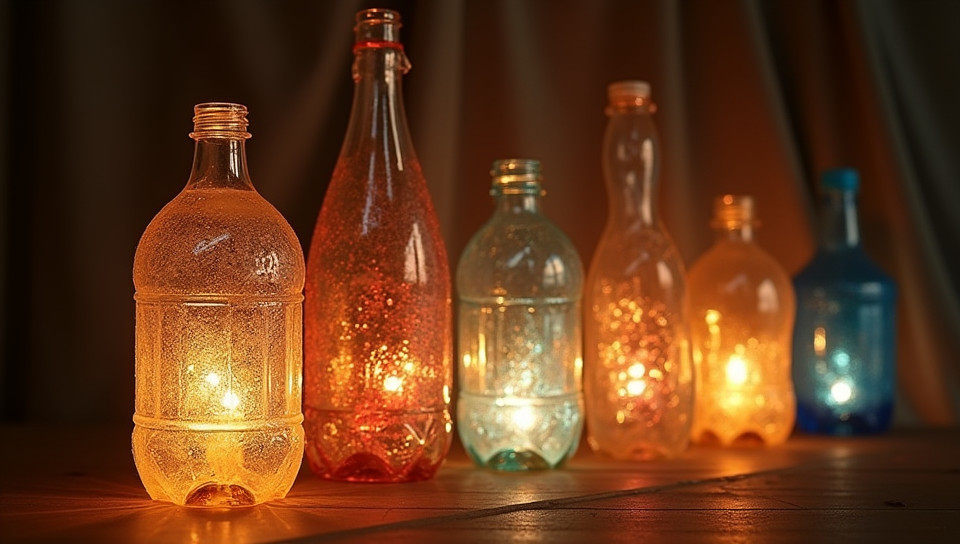Plastic bottles can be upcycled into decorative lamps easily 91%

Upcycling Plastic Bottles into Decorative Lamps: A Sustainable Solution
As we continue to grapple with the plastic pollution crisis, it's essential to explore innovative ways to reduce waste and promote sustainability. One creative solution is upcycling plastic bottles into decorative lamps, a process that not only reduces waste but also adds a touch of eco-friendly elegance to our homes.
The Problem with Plastic Bottles
Plastic bottles are one of the most commonly consumed plastics in the world, with millions discarded every day. While some may be recycled, many end up in landfills or oceans, contributing to environmental degradation and harming marine life. According to the United Nations, plastic waste has reached epidemic proportions, with 8 million tons entering the ocean every year.
The Solution: Upcycling Plastic Bottles into Lamps
Upcycling plastic bottles into lamps is a simple yet effective way to breathe new life into discarded materials. This process involves cleaning and transforming plastic bottles into functional lighting fixtures that can add ambiance and style to any room. With a few basic materials and some creativity, you can create unique and beautiful lamps that not only reduce waste but also promote sustainability.
Materials Needed
- Cleaned and cut plastic bottle
- LED light or small bulb
- Copper wire or electrical cord
- Wooden base or stand
- Paint or varnish (optional)
- Decorative items (such as beads or shells)
Step-by-Step Guide to Upcycling Plastic Bottles into Lamps
- Collect clean and dry plastic bottles, preferably of the same size and shape.
- Cut out the bottom of each bottle using a sharp object or scissors.
- Clean and prepare the bottle by removing any labels and debris.
- Drill holes at the top and bottom of the bottle for the LED light or bulb and copper wire/electrical cord.
- Attach the wooden base or stand to the bottle using glue or nails.
- Add paint or varnish to give the lamp a personalized touch (optional).
- Decorate the lamp with beads, shells, or other materials to add a unique design.
Benefits of Upcycling Plastic Bottles into Lamps
- Reduces waste and promotes sustainability
- Creates unique and functional lighting fixtures
- Adds a touch of eco-friendly elegance to our homes
- Encourages creativity and resourcefulness
- Can be a fun and educational DIY project for families and individuals
Conclusion
Upcycling plastic bottles into decorative lamps is a simple yet effective way to reduce waste, promote sustainability, and add a touch of elegance to our homes. With this creative solution, we can not only reduce the amount of plastic waste but also create unique and functional lighting fixtures that reflect our commitment to environmental responsibility. So next time you're about to throw away a plastic bottle, consider upcycling it into a beautiful lamp – your home, and the planet, will thank you!
- Created by: Rei Saitō
- Created at: Aug. 30, 2024, 10:06 p.m.
- ID: 8567